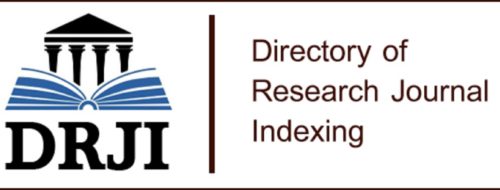Diseño de los Dimensionamientos de Alcantarillas para la Protección de la Red Vial Estatal E20 en el Tramo Quinindé – Esmeraldas, Ecuador
Palabras clave:
Diseño hidráulico, alcantarillas, red vial estatal, dimensionamiento, escorrentía, mitigación de dañosResumen
DOI: https://doi.org/10.46296/ig.v8i15.0234
Resumen
El presente trabajo analiza el diseño de alcantarillas para la red vial estatal E20 en el tramo Quinindé – Esmeraldas de la provincia de Esmeraldas, Ecuador. La investigación se justifica por la necesidad de proteger la infraestructura vial frente a daños ocasionados por escorrentía derivada de precipitaciones intensas en la región. Los objetivos incluyen el dimensionamiento de alcantarillas para mitigar el impacto de flujos hídricos. Se empleó un análisis hidrológico y una metodología racional generalizada, considerando datos de topografía y climatología. Los principales resultados indican la viabilidad de un diseño eficiente en el drenaje y la mitigación de daños estructurales en la vía. En conclusión, el diseño propuesto permitirá una optimización de los recursos de mantenimiento vial y favorecerá la durabilidad de la infraestructura.
Palabras clave: Diseño hidráulico, alcantarillas, red vial estatal, dimensionamiento, escorrentía, mitigación de daños.
Abstract
This study analyzes the design of culverts for the state road network E20, Quinindé – Esmeraldas section, in Esmeraldas Province, Ecuador. The research is justified by the need to protect road infrastructure from runoff damage caused by heavy rainfall in the region. Objectives include the sizing of culverts to mitigate the impact of water flows. A hydrological analysis and generalized rational methodology were used, considering topographic and climatological data. Key findings demonstrate the feasibility of an efficient design for drainage and structural damage mitigation on the road. In conclusion, the proposed design will optimize maintenance resources and enhance infrastructure durability.
Keywords: Hydraulic design, culverts, state road network, sizing, runoff, damage mitigation.
Información del manuscrito:
Fecha de recepción: 03 de octubre de 2024.
Fecha de aceptación: 19 de diciembre de 2024.
Fecha de publicación: 10 de enero de 2025.
Citas
Adegoke, C. W., & Sojobi, A. O. (2015). Climate Change Impact on Infrastructure in Osogbo Metropolis, South-West Nigeria. Journal of Emerging Trends in Engineering and Applied Sciences, 6(3), 156-167. Disponible en https://eprints.lmu.edu.ng/id/eprint/511
Alonso, F. (2005). Diseño hidráulico de alcantarillas. Recuperado de https://www.academia.edu/download/33602878/diseno_hidraulico__de_alcantarillas.pdf
Arnbjerg-Nielsen, K. (2012). Quantification of climate change effects on extreme precipitation used for high-resolution hydrologic design. Urban Water Journal, 9(1), 57-65. https://doi.org/10.1080/1573062X.2011.630091
Consejo de Agua, M.-I. del (2000). La modelación física en las obras hidráulicas. Recuperado de https://iwaponline.com/IA/article-abstract/7/1/55/68297
Denault, C. (2001). Assessment of the likely impact of climate change on infrastructure and natural ecosystems of a small watershed in British Columbia: Implications for hydraulic infrastructure design and stormwater management. University of British Columbia. https://dx.doi.org/10.14288/1.0063718
Laraque, A., Ronchail, J., Cochonneau, G., Pombosa, R., & Guyot, J. (2007). Heterogeneous distribution of rainfall and discharge regimes in the Ecuadorian Amazon Basin. Journal of Hydrometeorology, 8(6), 1364–1381. https://doi.org/10.1175/2007JHM784.1
Molina, A., Govers, G., Vanacker, V., Poesen, J., Zeelmaekers, E., & Cisneros, F. (2007). Runoff generation in a degraded Andean ecosystem: Interaction of vegetation cover and land use. Catena, 71(3), 357-370. https://doi.org/10.1016/j.catena.2007.04.002
Mora, D., Campozano, L., Cisneros, F., Wyseure, G., & Willems, P. (2013). Climate changes of hydrometeorological and hydrological extremes in the Paute basin, Ecuadorean Andes. Hydrology and Earth System Sciences, 18(2), 631-648. https://doi.org/10.5194/hess-18-631-2014
Perrin, J., & Bouvier, C. (2004). Rainfall – runoff modelling in the urban catchment of El Batan, Quito, Ecuador. Urban Water Journal, 1(4), 299-308. https://doi.org/10.1080/15730620412331299066
Rollenbeck, R., & Bendix, J. (2011). Rainfall distribution in the Andes of southern Ecuador derived from blending weather radar data and meteorological field observations. Atmospheric Research, 99(2), 277-289. https://doi.org/10.1016/J.ATMOSRES.2010.10.018
Sucozhañay, A., & Célleri, R. (2018). Impact of rain gauges distribution on the runoff simulation of a small mountain catchment in Southern Ecuador. Water. https://doi.org/10.3390/W10091169
Tousi, E. G., O’Brien, W. J., Doulabian, S., & Toosi, A. (2021). Climate changes impact on stormwater infrastructure design in Tucson, Arizona. Sustainable Cities and Society, 72, 103014. https://doi.org/10.1016/J.SCS.2021.103014
Verstraten, L., Wasko, C., Ashford, G., & Sharma, A. (2019). Sensitivity of Australian roof drainage structures to design rainfall variability and climatic change. Building and Environment. https://doi.org/10.1016/J.BUILDENV.2019.106230
Wilhere, G., Atha, J., Quinn, T., Tohver, I., & Helbrecht, L. (2017). Incorporating climate change into culvert design in Washington State, USA. Ecological Engineering, 104, 67-79. https://doi.org/10.1016/J.ECOLENG.2017.04.009
Yuan, T., Wang, S., Xu, D., Yuan, H., & Chen, H. (2017). Field and numerical experiment of an improved subsurface drainage system in Huaibei plain. Agricultural Water Management, 194, 24-32. https://doi.org/10.1016/J.AGWAT.2017.07.015
Zubieta, R., Getirana, A., Espinoza, J. C., & Lavado, W. (2015). Impacts of satellite-based precipitation datasets on rainfall–runoff modeling of the Western Amazon basin of Peru and Ecuador. Journal of Hydrology, 528, 599-612. https://doi.org/10.1016/J.JHYDROL.2015.06.064
Publicado
Cómo citar
Número
Sección
Licencia
Derechos de autor 2025 Revista Científica INGENIAR: Ingeniería, Tecnología e Investigación. ISSN: 2737-6249.

Esta obra está bajo una licencia internacional Creative Commons Atribución-NoComercial-CompartirIgual 4.0.

















